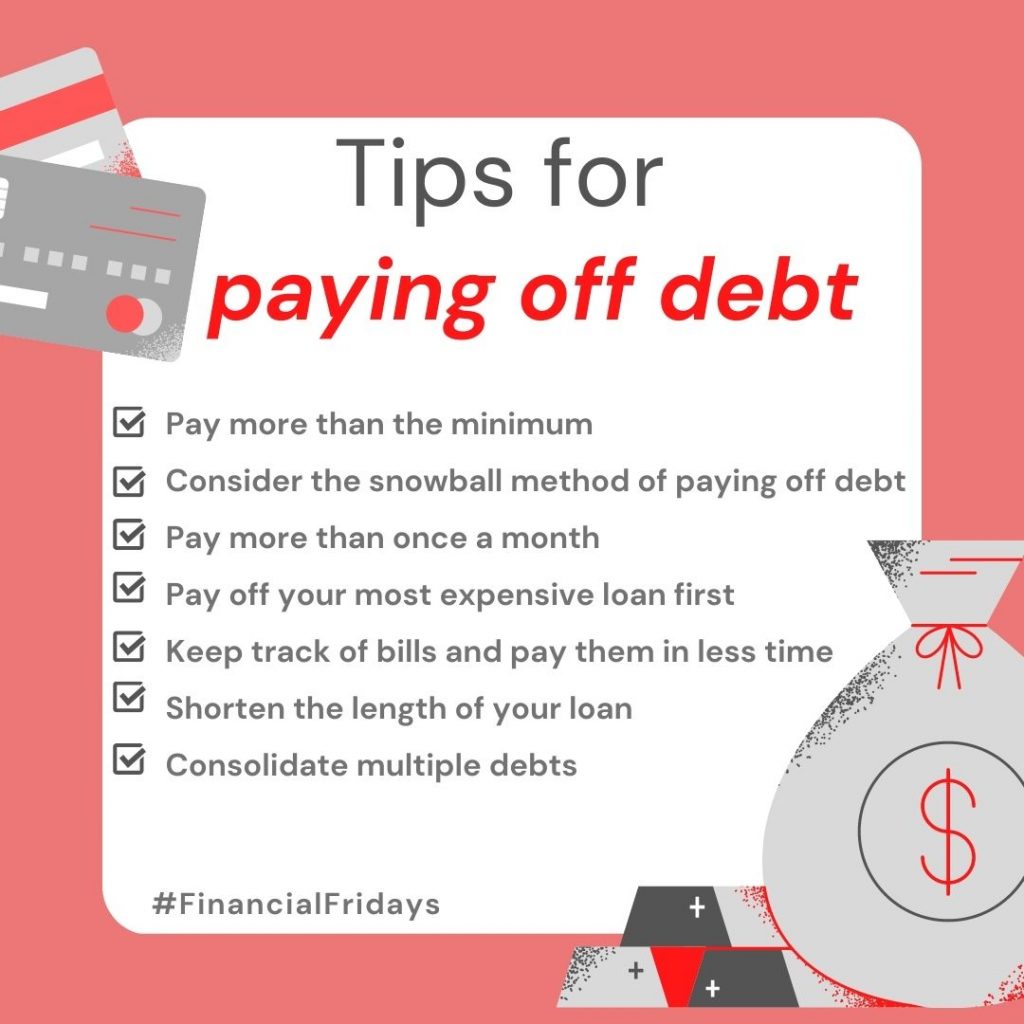#FinancialFridays: Tips for Paying off Debt

Pay more than the minimum.
Pay off your debt and save on interest by paying more than the minimum every month. The key is to make extra payments consistently so you can pay off your loan more quickly. Some lenders allow you to make an extra payment each month specifying that each extra payment goes toward the principal. Before you begin, check the terms of your loan to determine whether additional fees or prepayment penalties may apply.
Consider the snowball method of paying off debt.
This involves starting with your smallest balance first, paying that off and then rolling that same payment towards the next smallest balance as you work your way up to the largest balance. This method can help you build momentum as each balance is paid off. Understand the pros and cons of this debt pay down strategy by reviewing the Snowball versus Avalanche methods of paying down debt.
Pay more than once a month.
Pay your credit card bills more than the required once per month. This may make it easier to stay on track of how much you owe. Paying your credit card bill regularly may also lower your balance/utilization ratio. The credit utilization ratio is the percentage of your total available credit that is currently being used. The utilization ratio is one of the components used by credit reporting agencies to calculate your credit score.
Pay off your most expensive loan first.
Your most expensive loan is the loan with the highest interest rate. By paying it off first, you’re reducing the overall amount of interest you pay and decreasing your overall debt. Then, continue paying down debts with the next highest interest rates to save on your overall cost. This is sometimes referred to as the “avalanche method” of paying down debt.
Keep track of bills and pay them in less time.
Stay on top of your debt by using bill reminders and Online Bill Pay. Simply schedule the amounts you want to pay and when you want to pay them. You can also set up payment reminders and receive eBills from payees offering electronic billing.
Shorten the length of your loan.
Refinancing your debt to a shorter term may help you pay it off faster and save on the total cost of borrowing. You may be able to qualify for a lower rate, or a shorter or longer loan term, depending on your situation. Remember, shortening the term of your loan could increase your monthly payments.
Consolidate multiple debts.
Loan consolidation may help you repay debt faster by combining several high-interest rate loans or credit card balances into one new loan ideally with a lower interest rate.
#FinancialFridays is a service of our Financial Literacy Program.
Source: Wells Fargo

